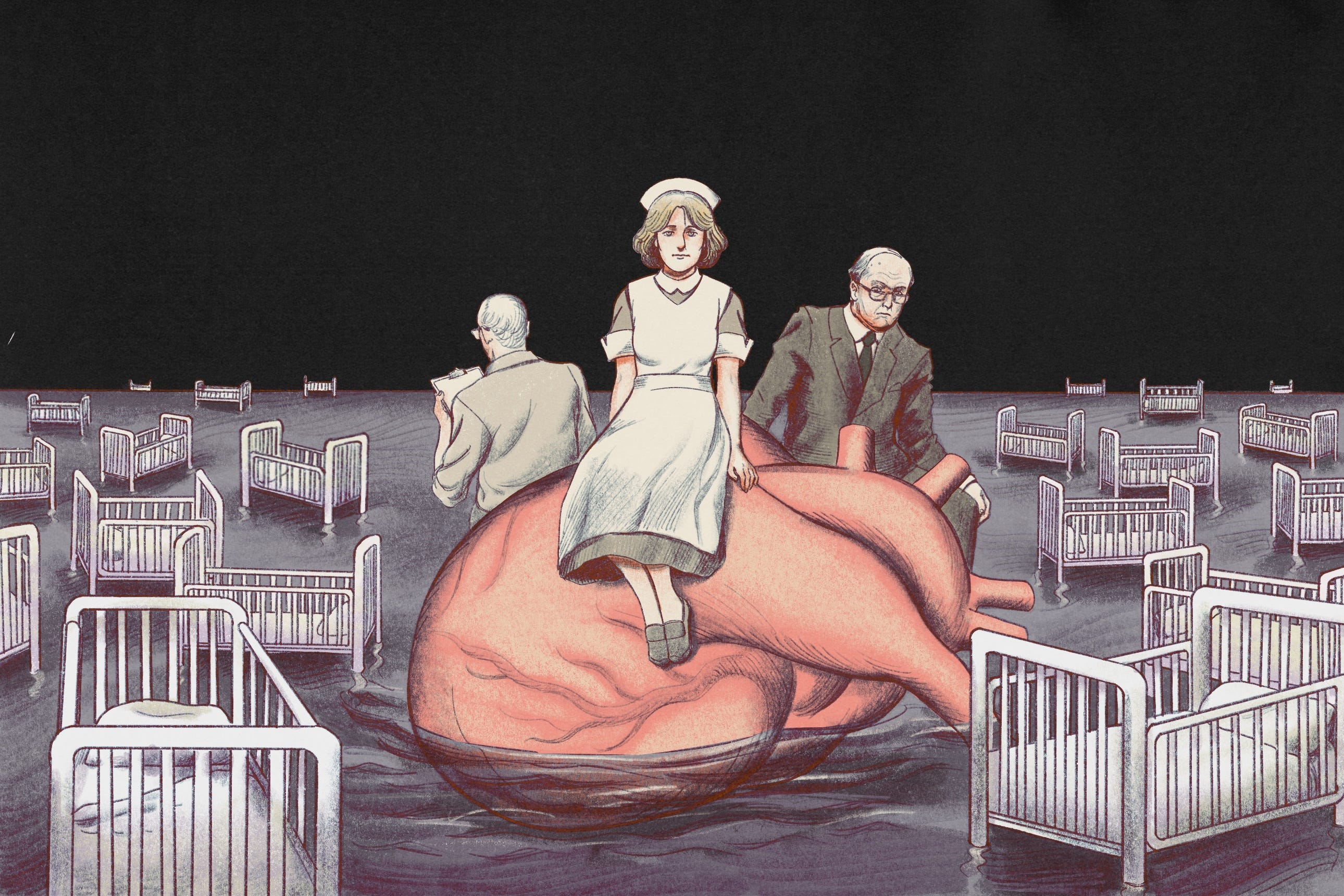Dozens of Infants Died Mysteriously at a Top Children’s Hospital—I Wanted to Know Why
Years after the suspicious deaths occurred at the very hospital where I spent time as a baby, I decided to investigate what happened. Had this been a mass murder or a tragic coincidence?
When our expert copy editor, Rob, sent back this piece after he had finished working on it, he wrote: “Boy, that certainly did not disappoint!” And that’s exactly how I feel, too. Leigh spent countless hours researching, reporting, writing and shaping this exhaustive story about a chilling mystery she felt a personal connection to — and it comes through in every sentence. This piece — the last in our series collab with Creative Nonfiction, Heart of the Matter — will have you at the edge of your seat, and then surprise you when you least expect it. Enjoy and please share! —Jesse Sposato, executive editor
Kevin Garnett was furious. He shouted and banged his fist against a wall inside Toronto’s Hospital for Sick Children, demanding to know why his son had died.
The boy, Kevin Pacsai, had been born just 25 days earlier with a head of dark hair like his 21-year-old father. His mother, Laurie Pacsai, also 21, thought her son was perfect. But Kevin’s heart had started to fail in his second week of life, and he had barely survived an episode of shock. His heart was structurally normal, but its conduction system seemed to be misfiring. Earlier that day, March 11, 1981, he had been transferred to the world-renowned hospital, known as SickKids.
Youngsters came from all over the globe to the imposing brick building, where doctors had invented techniques that revolutionized pediatric heart surgery. Cardiologists were venerated; they seemed to work miracles to prolong the lives of children born with faulty hearts. The previous spring, the hospital had unveiled a splashy renovation of its cardiac unit, which now stretched over wards 4A and 4B.
But since the summer, deaths on the cardiac unit had soared — 625 percent higher during the nine-month period between July 1980 and March 1981 than in the periods before and after, according to a later government analysis. Most of the deaths had happened overnight, when one of the eight nursing teams, headed by Phyllis Trayner, was on duty. By the fall of 1980, the five nurses had earned a nickname: “the jinx team.”
The cardiologists at the hospital had formally discussed the surge in deaths in the fall, around the time the nickname had surfaced, as well as a few months later in January. But they attributed the children’s deaths to their cardiac conditions and thought that the increase might be a natural cluster. “You have some in which you say, ‘This child was expected to die.’ They were seriously ill or they wouldn’t be in the cardiac unit,” a hospital administrator told the Toronto Star in a May 1982 article.
Kevin, though, didn’t seem to fit in that category. Doctors had told his mother, Laurie, to go home and get some rest; her son was out of harm’s way. He likely had a condition that would respond to treatment. Overnight, two doctors examined the baby and found his heart rate stable. They told the nurse who was looking after him, 24-year-old Susan Nelles, that they saw little cause for immediate concern.
But by around 4 a.m., Kevin’s condition had changed. His heart was oscillating back and forth between slow and fast beats. He was lethargic, his breathing shallow, his extremities blue. Dr. Colm Costigan, the hospital’s chief pediatric resident, checked the boy’s heart rate; it was slow. The doctor suspected Kevin might be suffering from an overdose of digoxin, a medication used to treat congestive heart failure.
Digoxin, a derivative of the foxglove plant, has been used for centuries to help the heart pump. Babies’ doses are tiny, measured in millionths of a gram; the line between a therapeutic dose and a toxic dose is narrow, making the risk of an overdose high, though not fatal in every case. Digoxin toxicity can manifest as an irregular or slow heart rate, vomiting, cardiac arrest and seizures, among other symptoms — all of which can also indicate unrelated cardiac issues. SickKids tested patients who were getting digoxin; if their blood showed a reading of 3.5 nanograms per milliliter (ng/mL) or more, doctors would put the medication on hold.
Dr. Costigan transferred Kevin to the intensive care unit and put a hold on his digoxin. For an hour, the baby’s heart rate returned to normal. By then the sun was up. At around 8:45 a.m., Kevin stopped breathing. The lower chambers of his heart started to contract rapidly, out of sync. Over and over again, Dr. Costigan and the arrest team tried to resuscitate the infant, but it didn’t work. At around 10 a.m. on March 12, 1981, Kevin was pronounced dead.



